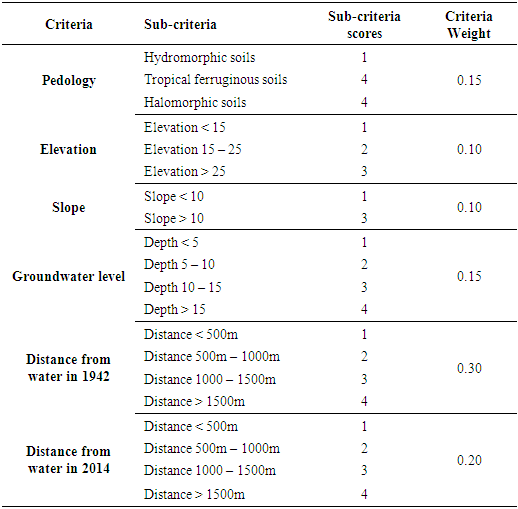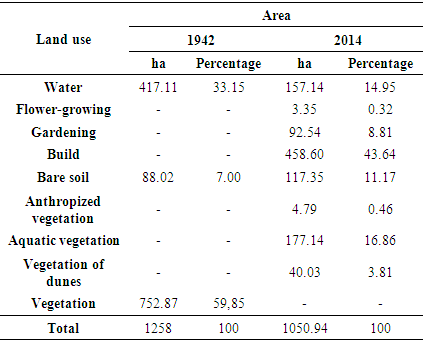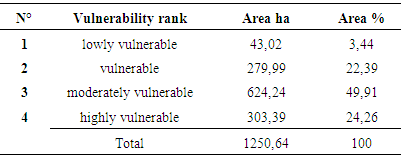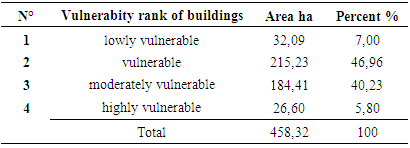| [1] | ADISE (2013). Association of Graduates of the Institute of Environmental Sciences. The preservation of the Technopôle, a challenge for all. Adise.environnement@gmail.com, 6 p. |
| [2] | Al-Hanbali, A., Alsaaideh, B. & Kondoh, A. (2011). Using GIS-Based Weighted Linear Combination Analysis and Remote Sensing Techniques to Select Optimum Solid Waste Disposal Sites within Mafraq City, Jordan. Journal of Geographic Information System, 2011, 3, 267-278. doi:10.4236/jgis.2011.34023. |
| [3] | ANRSA (2012). National Agency of Applied Scientific Research of Senegal. Scientific contribution to the ten-year plan of Sustainable Flood Management in Senegal, Workshop Act, Synoptic Document, 23 p. |
| [4] | ANSD (2010). National Agency of Statistics and Demography. Economic and social situation of the Dakar region in 2009, 114 p. |
| [5] | Ayehu, G. T. & Besufekad, S. A. (2015). Land Suitability Analysis for Rice Production: A GIS Based Multi-Criteria Decision Approach. American Journal of Geographic Information System, 4(3), DOI: 10.5923/j.ajgis.20150403.02, pp. 95-104. |
| [6] | Bagheri, M., Sulaiman, W.N.A, & Vaghefi, N. (2012). Land use suitability analysis using multicriteria decision analysis method for Coastal Management and Planning: A case study of Malaysia. Journal of Environment Science and Technology 5(5): 364-372, 2012. Dio: 10.3923/jets.2012.364.372. |
| [7] | Balzarini, R. (2013). Cognitive approach for the integration of geomatics tools in environmental sciences: Modeling and evaluation. Thesis University of Grenoble, 327 p. |
| [8] | Bassel, M. (1996). Water and Environment in Dakar: rain, runoff, pollution and evacuation of water. Doctoral Thesis in Geography. University Cheikh Anta Diop of Dakar, 202 p. |
| [9] | Bodian, A. (2014). Characterization of the recent temporal variability of annual precipitation in Senegal (West Africa). Physio-Géo, Volume 8, DOI: 10.4000/physio-geo.4243, pp. 297-312. |
| [10] | Chakhar, S., & Martel, J.-M. (2003). Enhancing geographical information systems capabilities with multi-criteria evaluation functions. Journal of Geographic Information and Decision Analysis, 7(2), pp. 47-71. |
| [11] | Chenal, J. (2009). Urbanization, urban planning and city models in West Africa: games and stakes in public space. PhD thesis in architecture, city, history, 570 p. |
| [12] | Dasylva, S. & Cosandey, C. (2010). Elements of evaluation and action of sustainable rainwater governance in an urbanized environment in the Sahel for biodiversity and food security. Biodiversity and Environmental Assessment Colloquium, International Francophone Secretariat for Environmental Assessment (SIFEE), Unesco, Paris, 20 p. |
| [13] | D'Ercole, R., Thouret, J. C., Dollfus, O. & Asté, J. P. (1994). The vulnerabilities of societies and urbanized spaces: concepts, typology, modes of analysis. In Revue de géographie alpine, tome 82, n°4, DOI: 10.3406/rga.1994.3776, pp. 87-96. |
| [14] | Diallo, F. B. (2015). Socio-spatial dynamics of market gardening in an urban wetland: the example of the Niaye de Pikine, Senegal. Master memory, Institute of Environmental Sciences, Cheikh Anta Diop University of Dakar, 48 p. |
| [15] | Dieng, N. M. (2009). Analysis of hydrological risks with satellite imagery: case of floods in the Dakar region. Master memory In Applied Geology / Cheikh Anta Diop University of Dakar, 111 p. |
| [16] | Diongue, M. (2014). Urban Outskirts and risks of flooding in Dakar (Senegal): the case of Yeumbeul Nord. Eso Travaux and documents, Work Summaries, n°37, pp 45-54. |
| [17] | Diop, A. (2006). Dynamic land occupation of the Niayes in the Dakar region from 1966 to 2003: Examples of the Great Niaye of Pikine and the Niaye of Yeumbeul. Memory of DEA, Institute of Environmental Sciences / Cheikh Anta Diop University of Dakar, 90 p. |
| [18] | Diop, A., Niang, C. I., Mbow, C. & Diallo, A. D. (2014). Study of the vulnerability of Thiaroye on sea to floods: factors and effects. Liens Nouvelle Série, N° 18 December, pp 186-200. |
| [19] | Diop, C. & Sagna, P. (2011). Climate vulnerability of Dakar districts in Senegal: Example of Nord-Foire-Azur and Hann-Maristes, Proceedings of the symposium "Reinforcing resilience to urban climate change: from spatialized diagnosis to adaptation measures" (2R2CV) 07 and 08 July 2011, Paul Verlaine University -Metz, France, 12 p. |
| [20] | DEVU (Direction of Urban Green Spaces), DDH Environnement Ltée (info@ddh-env.com), Cabinet PRESTIGE (prestige@sentoo.sn) and GEOIDD (geoidd@planet.tn) (2004). Elaboration of the Master Plan for Development and Safeguarding of the Niayes and Dakar green zones (PDAS), Report on Diagnostic Studies and Action Program for the Safeguarding and Urban Development of the Niayes and Green Areas of Dakar (PASDUNE), 172 p. |
| [21] | Djigo, M. (2009). Urban flooding in Senegal is becoming increasingly dangerous and less manageable. Communication on flooding in Dakar, 12 p. |
| [22] | Dodman, T. & Diagana, C. H. (2003). Censuses of Water Birds in Africa 1999, 2000 and 2001, Wetlands International, African Waterbird Census, Global Series n°16, Wageningen, The Netherlands, 368 p. |
| [23] | Ecological Monitoring Center (2010). Report on the state of the environment in Senegal, 265 p. |
| [24] | Emmanuel Udo, A., Ojinnaka, O. C., Baywood, C. N. & Gift, U. A. (2015). Flood Hazard Analysis and Damage Assessment of 2012 Flood in Anambra State Using GIS and Remote Sensing Approach. American Journal of Geographic Information System, 2015, 4(1), DOI: 10.5923/j.ajgis.20150401.03, pp. 38-51. |
| [25] | Faye, E., Dieng, H., Bogaert, J. & Lejoly J. (2014). Dynamics of the flora and vegetation of the Niayes and Groundnut basin in Senegal. Journal of Agriculture and Environment for international Development (JAEID), 2014, 108 (2): pp. 191- 206. |
| [26] | GFDRR, (2014). Global Facility for Disaster Reduction and Recovery. Le relèvement et la reconstruction à partir de 2009, Etude de cas pour le Cadre de relèvement post inondations au Sénégal, 44 p. |
| [27] | Girard, M.C. & Girard, C.M. (1999). Remote Sensing Data Processing. DUNOD Ed. Paris, pp. 236-334. |
| [28] | Godard, V. (2005). GIS and Decision Support, course notes, Department of Geography, University of Paris 8, France. |
| [29] | Hubert, P. Servat, E., Paturel, J.-E., Kouame, B., Bendjoudi, H., Carbonnel, J.-P. & Lubes-niel, H. (1998). The segmentation procedure, ten (10) years after. Water Resources Variability in Africa during The XXJh Century (proceedings of The Abidjan'98 Conference held al Abidjan, Côte d'lvoire. November 1998). IAHS Pub. Numéro 252, 1998, 7 p. |
| [30] | IAGU, (2014). African Institute for Urban Management. Floods in the suburbs of Dakar: Towards Adaptation through Improvements in Building, Infrastructure and Local Governance to Reduce the Vulnerability of Assets of Households and Communities, Final Technical Report. URI/URL: http://hdl.handle.net/10625/53300, n° 107026, 57 p. |
| [31] | IPCC, (2012). Summary for Policymakers. In: Field, C.B., Barros, V., Stocker, T.F., Qin, D., Dokken, D.J., Ebi, K.L., Mastrandrea, M.D., Mach, K.J., Plattner, G.-K., Allen, S.K., Tignor, M. and Midgley, P.M., Eds., Managing the Risks of Extreme Events and Disasters to Advance Climate Change Adaptation, A Special Report of Working Groups I and II of the Intergovernmental Panel on Climate Change, Cambridge University Press, Cambridge, UK, and New York, p. 1-19. |
| [32] | IPCC, (2013). Climate change 2013: The scientific elements. Summary for policy makers. Contribution of Working Group I to the fifth Assessment Report of the Intergovernmental Panel on Climate Change. Cambridge University Press, Cambridge, Royaume-Uni et New York (État de New York), États-Unis d’Amérique, 204 p. |
| [33] | Jankowski, P., Andrienko, N. & Andrienko, G. (2001). Map-centre exploratory approach to multiple criteria spatial decision making. International Journal of Geographical Information Science, Vol. 15, pp. 101-127. |
| [34] | Jha, Abhas K., Bloch, R. & Lamond, J. (2012). Cities and Flooding: A Guide to Integrated Urban Flood Risk Management for the 21st Century. World Bank Training, https://openknowledge.worldbank.org/handle/10986/2241. DOI: 10.1596/978-0-8213-8866-2, pp. 8-63. |
| [35] | Laaroubi, H. (2007). Hydrological study of the urban watersheds of Rufisque, PhD thesis in Geography, Cheikh Anta Diop University of Dakar, 265 p. + annexes. |
| [36] | Lo, M. & Chellouche, Y. A. (2013). National Consultation on the Post-2015 Framework for Action on Disaster Reduction, Report of Senegal with Technical Support from UNISDR Africa, Provisional Version, 90p. |
| [37] | Malczcewski, J. (1999). GIS and multicriteria decision analysis. Department of geography, University of Western Ontario, John Wiley & Sons, New York, 363 p. |
| [38] | Malczewski, J. (2004). GIS-Based Land-Use Suitability Analysis: A Critical Overview on ResearchGate, The professional network for scientists, Vol. 62, No. 1, 2004, DOI: 10.1016/j.progress.2003.09.002,URL. pp. 3-65. |
| [39] | Mbow, C., Diop, A., Diaw, A.T. & Niang, C.I. (2008). Urban Sprawl Development and Flooding at Yeumbeul Suburb (Dakar-Senegal). African Journal of Environmental Science and Technology, Vol. 2(4), pp 75-88. |
| [40] | MDRH, (1976). Ministry of Rural Development and the hydraulics of Senegal. Master Plan for Water supply and sanitation of Dakar and its region, Study II of the sanitation stormwater and wastewater, State of knowledge, Guidelines for the 3rd phase, 103 p. |
| [41] | Mokarram, M. & Aminzadeh, F. (2011). Gis-based multicriteria land suitability evaluation using ordered weight averaging with fuzzy quantifier: a case study in Shavur plain, Iran. The International Archives of the Photogrammetry, Remote Sensing and Spatial Information Sciences, Vol. 38, 350 p. |
| [42] | Ndao, M. (2012). Dynamics and environmental management from 1970 to 2010 of the wetlands in Senegal: Study of the land use by remote sensing of the Niayes with Djiddah Thiaroye Kao (in Dakar), Mboro (in Thiès) and Saint-Louis. PhD, University of Toulouse, Toulouse, 370 p. |
| [43] | Ndiaye, A. (2011). Geographic information system and remote sensing for the management of natural risks: Application to the floods of the Dakar region (Senegal). Memory of Master II, CRASTE_LF, 97 p. |
| [44] | Ndiaye, M. L., Traoré, V. B., Touré, M. A., Malomar G., Diaw, A T. & Beye, A. C. (2016b). Contribution of Remote Sensing to the Study of Spatiotemporal Evolution of Rainfall in Senegal: Exploitation of TRMM 3B43 Low Spatial Resolution. Journal of Multidisciplinary Engineering Science Studies, Vol. 2 (7), pp. 748-752. |
| [45] | Ndiaye, M. L., Traoré, V. B., Touré, M. A., Sambou, A., Diaw, A. T. & Beye, A. C. (2016a). Detection and Ranking of Vulnerable Areas to Urban Flooding Using GIS and ASMC (Spatial Analysis multicriteria): A Case Study in Dakar, Senegal. International Journal of Advanced Engineering, Management and Science (IJAEMS), Vol-2 (8). pp.1270-1277. |
| [46] | Nisar Ahamed, T. R., Gopal Rao, K. & Murthy, J. S. R. (2000). GIS-based fuzzy membership model for crop-land suitability analysis. Agricultural Systems, 63 (2000), 75–95. |
| [47] | Prakash, T.N. (2003). Land Suitability Analysis for Agricultural Crops A Fuzzy Multicriteria Decision Making Approach. The Netherlands: International Institute for Geo-information Science and Earth observation Enschede, pp. 6–13. (2). |
| [48] | Quenault, B., Bertrand, F., Blond, N. & Pigeon, P. (2011). Interdisciplinary and systemic reinterpretation of the couple vulnerability / urban adaptation to climate change. Proceedings of the symposium "Strengthening Resilience to Climate Change in Cities: From Spatial Diagnosis to Adaptation Measures" (2r2cv) 07 and 08 July 2011, Paul Verlaine University - Metz, France. 20 p. |
| [49] | Rafai, N., Khattabi, A. & Rhazi, L. (2014). Flood modeling of rivers for integrated flood risk management: case of the Tahaddart watershed (north-west of Morocco). Journal of Water Science, vol. 27, n° 1, 2014, p. 57-69. URI, DOI: 10.7202/1021982ar, 13 p. |
| [50] | Regional Council of Dakar, (2011). What are the synergies for flooding in the Dakar region?, Research-Seminar Report, URL : https://www.urbamonde.org/sites/urbamonde.org/files/seminaire_regional.pdf, 56p. |
| [51] | Roche, M. (1963). Surface Hydrology. Gauthier-Villars ORSTOM, Paris, 430 p. |
| [52] | Saaty, T. L. (1977). A scaling method for priorities in hierarchical structures. Journal of mathematical Psychology, No 15, pp. 234-281. |
| [53] | Saaty, T. L. (1980). The Analytic Hierarchy Process. New-York (USA), McGraw-Hill, 287 p. |
| [54] | Sène, S. & Ozer, P. (2002). Rainfall evolution and the relationship between floods and rain events in Senegal. Bulletin of the Geographical Society of Liège, n° 42, pp. 27-33. |
| [55] | SONES (2013). National Senegal Water Company. Emergency fight against floods program, component: disconnection drilling Thiaroye, communication Sones during the workshop to share the results of the water analysis of Diambar pumps and exchanges on pumping drilling Of the Thiaroye groundwaterlevel, 13, 14 and 15 September 2013, Dakar, Senegal, 18 p. |
| [56] | Soto, D. & Renard, F. (2014). Spatial assessment of the risk of flooding by crossing the hazard and the vulnerability of the stakes: application to the Great Lyon floods. University of Lyon, France. 10 p. |
| [57] | Thi, C. N. (2013). Preliminary study of the dynamics of land use, some lakes and the vascular flora of the Dakar Technopole, Senegal. Memory of Master II in environment, Cheikh Anta Diop University of Dakar, Institute of Environmental Sciences, 44 p. |
| [58] | Thiam, M. D. (2011). The flooding syndrome in Senegal. Presses Universitaires of Sahel. 224 p. |
| [59] | Triantaphyllou, E. & Mann, S.H. (1995). Using the analytic hierarchy process for decision making in engineering applications: some challenges Inter’l Journal of Industrial Engineering: Applications and Practice, Vol. 2, No. 1, pp. 35-44. |
| [60] | UN (2015). United Nations. Sendai Framework for Disaster Risk Reduction 2015-2030, Third United Nations World Conference in Japan, Sendai, 14-18 March 2015, 35 p. |
| [61] | UNISDR Africa, CUA & EAC (2013). Secretariat of the International Strategy for Disaster Reduction of the United Nations (Regional Office for Africa), Commission of the African Union and East African Community. Fourth African Regional Platform, Annex 1: Africa's Situation Report on Disaster Risk Reduction. Executive Summary. On 13, 14 and 15 February 2013, Ngurdoto Lodge, Arusha (Tanzania). 5 p. |
| [62] | USGS (2016). https://earthexplorer.usgs.gov/, website visited in October 2016. |
| [63] | Veyret Y. & Reghezza M. (2006). Vulnerability and Risks, Recent Vulnerability Approach, Accountability and Environment, n° 43, pp. 9-14. |
| [64] | Voogd, H. (1983). Multicriteria Evaluation for Urban and Regional Planning, Pion Limited, London. |
| [65] | Wade, S., Faye, S., Dieng, M., Kaba, M. & Kane, N.R. (2009). Remote sensing of urban flood disasters: the case of the Dakar region (Senegal), Scientific Animation Days (JAS) of the AUF, Algiers November 2009. |
| [66] | World Bank, (2009). Preparation for the Management of Natural Hazards and Risks Related to Climate Change in Dakar, Senegal: A Spatial and Institutional Approach, Report of the Pilot Study. Washington, DC, World Bank, 112 p. |
| [67] | Malczewski, J. (2000). On the use of weighted linear combination method in GIS: Common and Best practice approaches, Transactions in GIS, 4(1): pp. 5-22. |



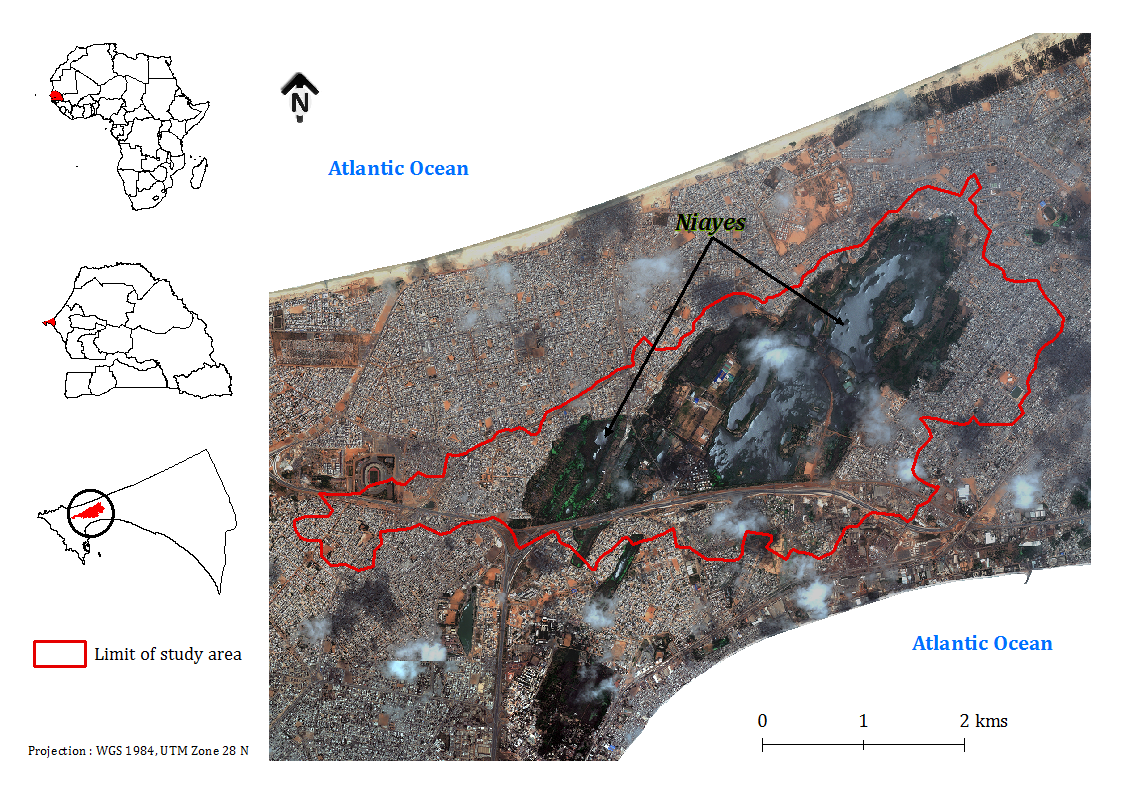

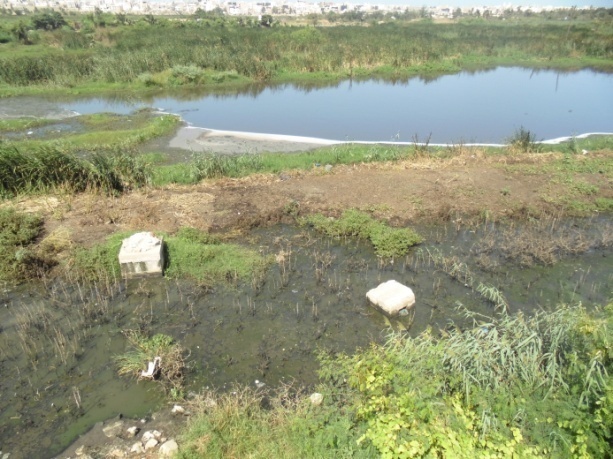
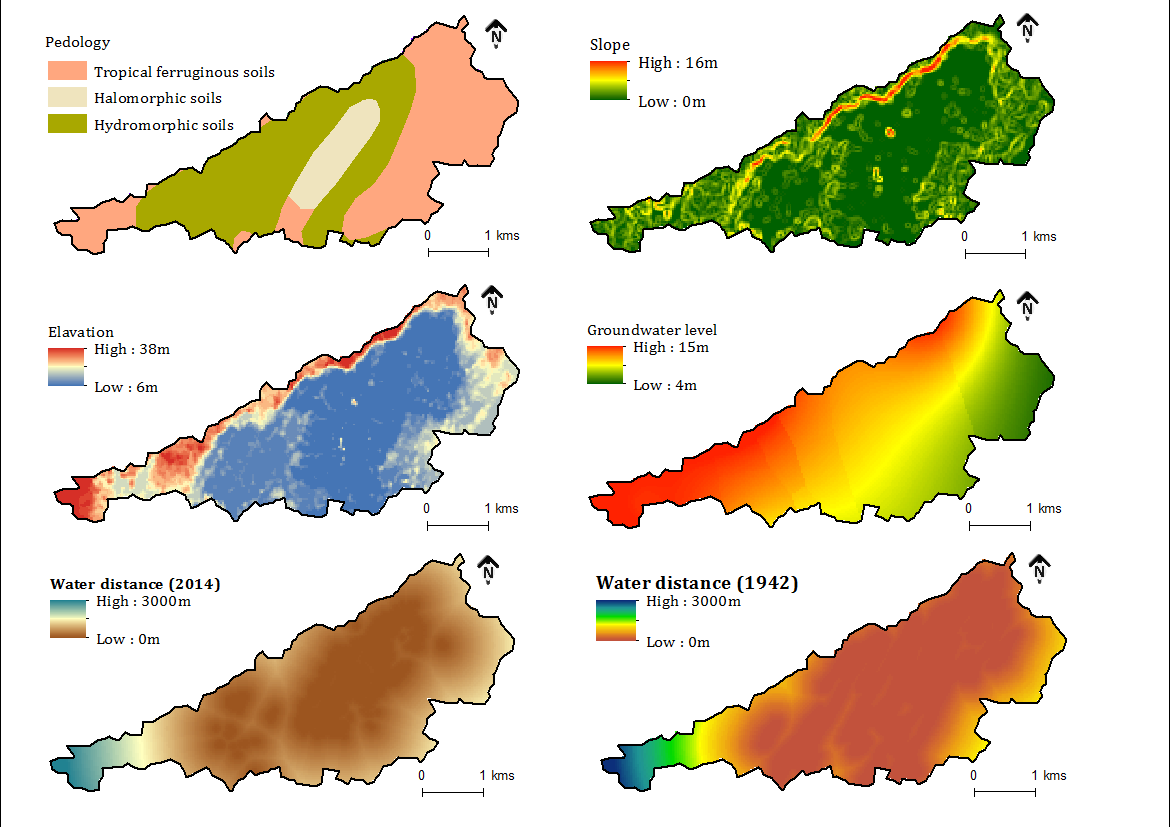
 Where n is the total number of pixels included in the matrix.The Kappa coefficient is a quality estimator that takes into account row and column errors. It varies from 0 to 1 (Girard and Girard, 1999). The latter is calculated using equation (2).
Where n is the total number of pixels included in the matrix.The Kappa coefficient is a quality estimator that takes into account row and column errors. It varies from 0 to 1 (Girard and Girard, 1999). The latter is calculated using equation (2).  Where r is the number of rows in the matrix, xii is the number of observations in row i and column i (i.e., diagonal element, xi+ and x+i are the marginal totals of rows i and column i, respectly, and N is the total number of observations.
Where r is the number of rows in the matrix, xii is the number of observations in row i and column i (i.e., diagonal element, xi+ and x+i are the marginal totals of rows i and column i, respectly, and N is the total number of observations.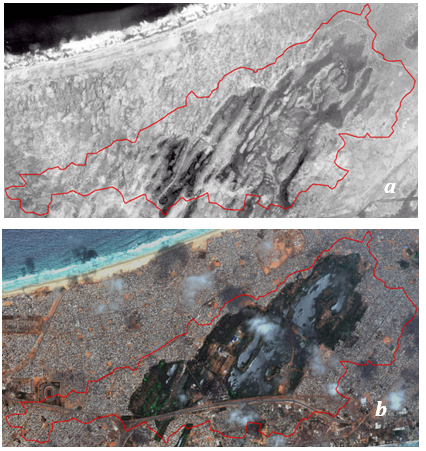
 Where S is the suitability, wi is a weighting of factor i, and xi is the criterion score of factor i.To identify the build vulnerable to the floods, we vectorized the result of the vulnerability, and then selected by locality the build according to the vulnerability. Ultimately, the proportion of each level of fracture vulnerability is calculated using the following formula:
Where S is the suitability, wi is a weighting of factor i, and xi is the criterion score of factor i.To identify the build vulnerable to the floods, we vectorized the result of the vulnerability, and then selected by locality the build according to the vulnerability. Ultimately, the proportion of each level of fracture vulnerability is calculated using the following formula:  With:
With:  = proportion of vulnerability of a given build class;
= proportion of vulnerability of a given build class;  area of a vulnerable building class; and
area of a vulnerable building class; and  corresponds to the remainder of vulnerable building class.
corresponds to the remainder of vulnerable building class.
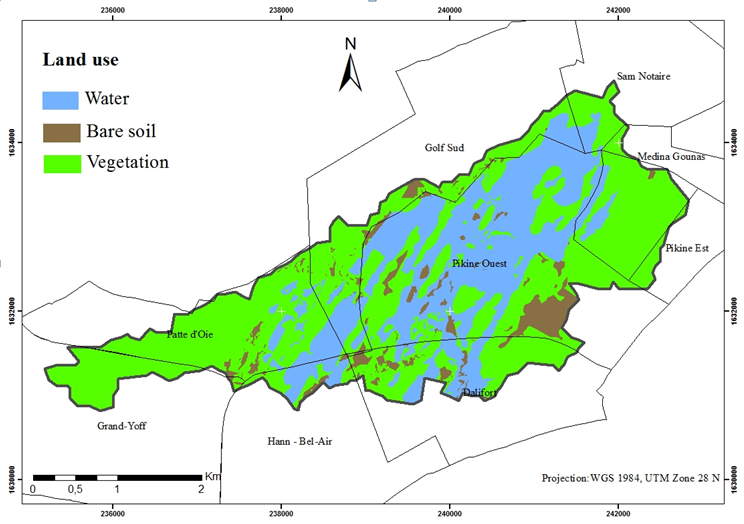

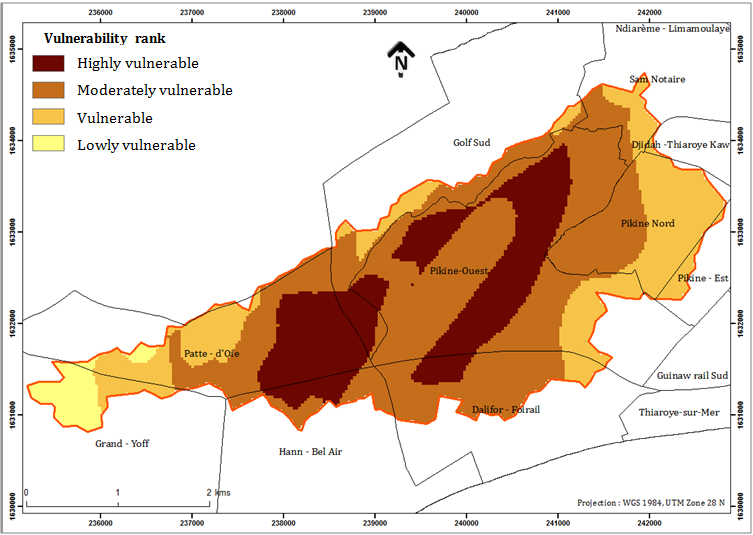

 Abstract
Abstract Reference
Reference Full-Text PDF
Full-Text PDF Full-text HTML
Full-text HTML
